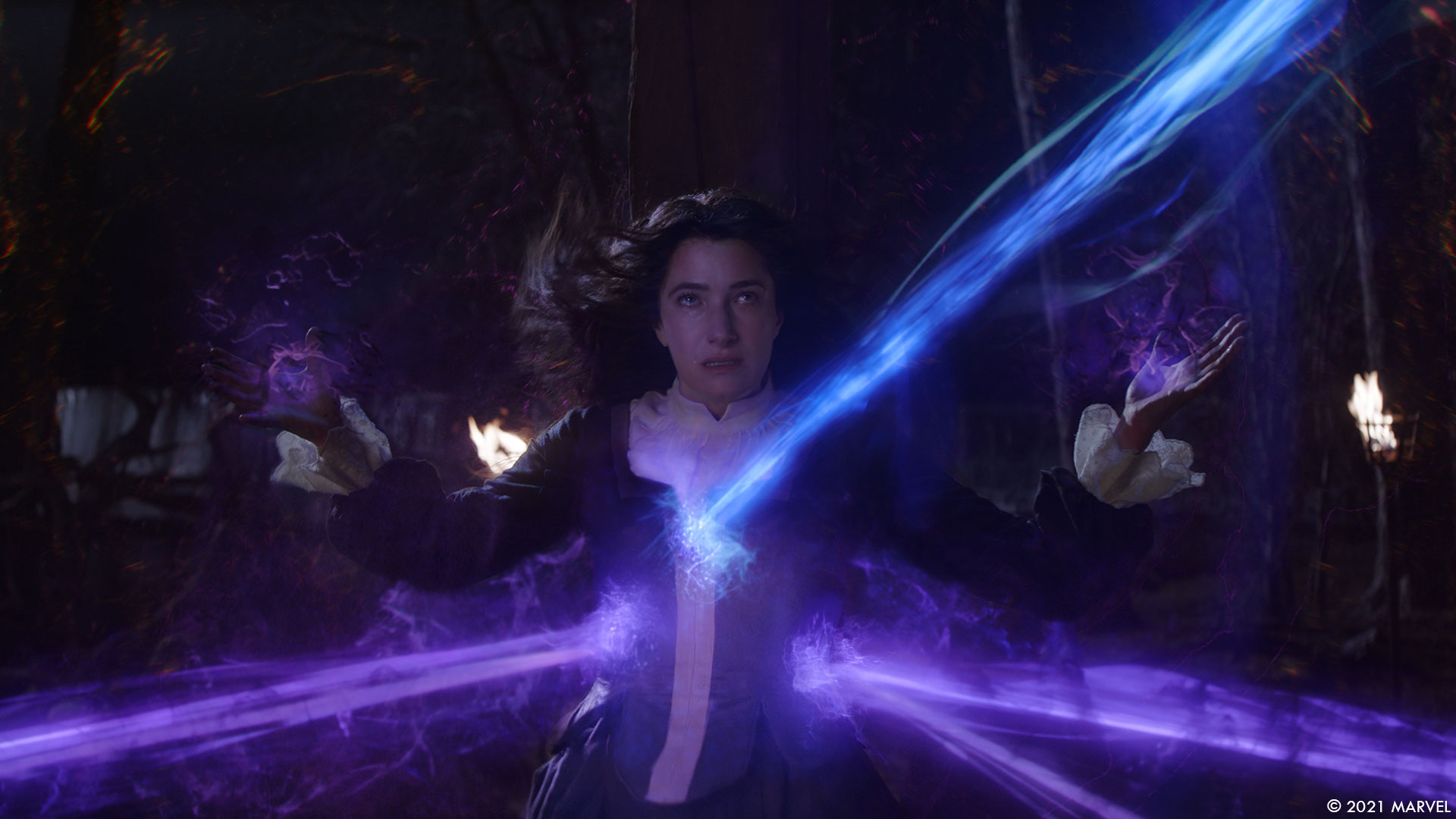Ralph Maiers has been working in visual effects for over 25 years. He has worked on many shows including Night at the Museum: Secret of the Tomb, Crouching Tiger, Hidden Dragon: Sword of Destiny, Altered Carbon and Lost in Space.
What is your background?
My background includes Photography, writing, producing, motion control, motion capture and 3D environment creation. I began my visual effects career as a digital compositor and worked at many of the hi-end visual effects companies in Hollywood during the late eighties and nineties.
I tend to gravitate toward natural FX, real lens depth, and queuing. I am a classically trained oil painter and sculptor, so I have a long history of imitating reality and a technicians well-trained eye. The long history in the industry informs my choices and helps project the way forward on both sequences and individual shots.
How did you and Mr. X get involved on this series?
Marvel approached us to begin some R&D on a scene for Episode #109. The initial work was to create some Desiccating Witch tests and quickly evolved into the Origin story for Agatha Harkness that the WandaVision series pivots around.
How was the collaboration with Director Matt Shakman and VFX Supervisor Tara DeMarco?
The collaboration with both the show side supervisor (Tara DeMarco) and Matt the director was energetic and fun. We spent many cineSync sessions on explorations in varying approaches to both the witch’s destruction and the overall magic envelope that they inhabit during the flashback to the 1600’s Coven.
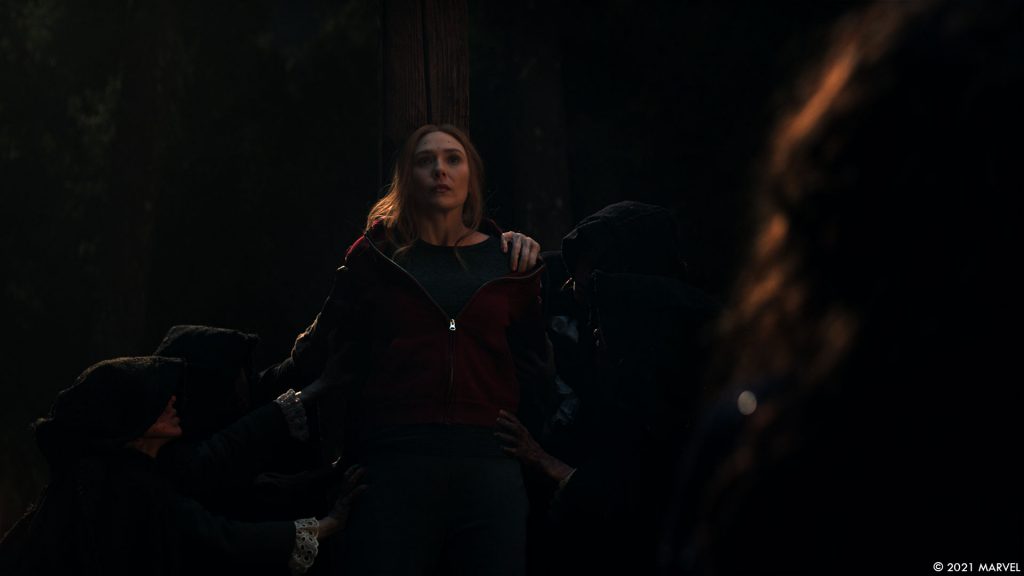
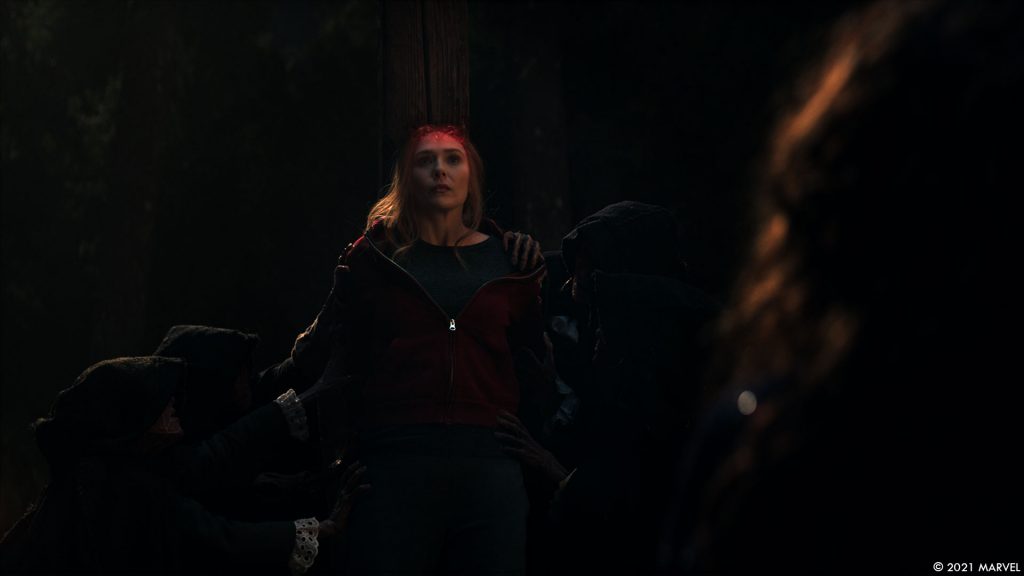
What was their approach and expectations about the visual effects?
The scene is quite a dark moment in the Marvel cinematic universe. The Witches are about to execute Agatha at a young age of approximately 18 years old. The Coven has discovered her powers are uncontrollable and therefore need to be extinguished. The evolution of the scene was toward a darker theme and so we walked softly into the horror genre. Of course, the balance of family friendly mysticism was a governing factor in all discussions. Matt and Tara helped guide us through the dark and scary but not too scary world of Agatha’s twisty past. Matt’s color and tone choices allowed for a fairly quick understanding of what was happening but kept the scenes from going too deep into the horror aspect of the coven.
How did you organize the work with your VFX Producer?
The Show days at Mr. X are calendarized into morning meetings for Composite and the disciplines of CGI creation. So the daily schedule is Modeling, Rigging, match move and tech animation in half hour or hourly time blocks depending on the needs of the departments. The Composite discipline is usually split into two sessions for iteration notes, one early and one later in the day. Lighting and Look Dev are sprinkled into the mix for review when they become factors for discussion. The department meetings happen at fixed times throughout the day to keep everyone in constant communication as the elements evolve and approaches change over the course of the shows. The shots are broken into Key and sibling shots. The Key shots are chosen based on the importance for the sequence and the corresponding camera or action that drives story. The secondary shots are then chosen based on their relationship to the Key shots. Similar angles and or FX needed are categorized into sub-groups and follow the development of the Key shot they mirror or have similarity too.
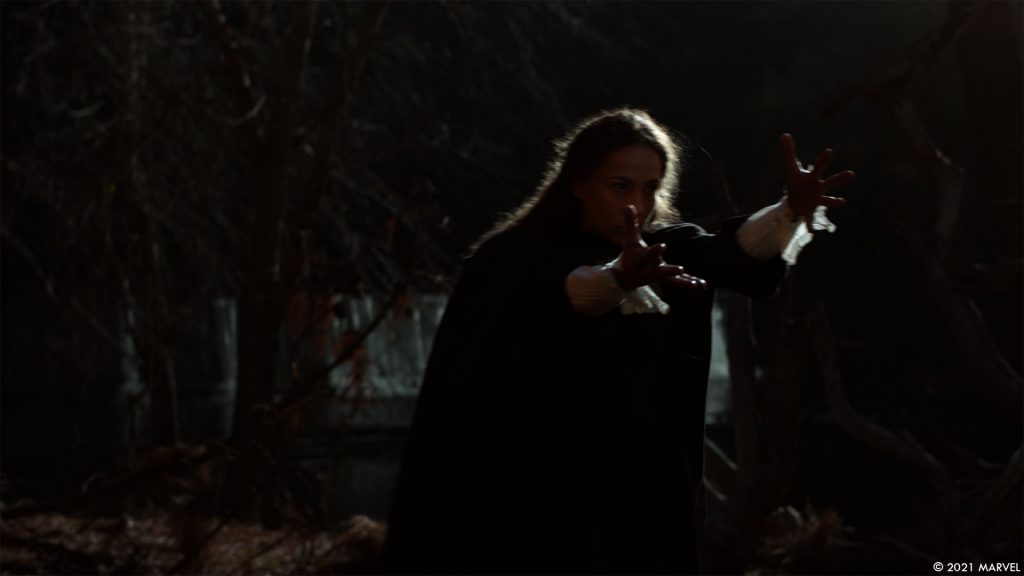
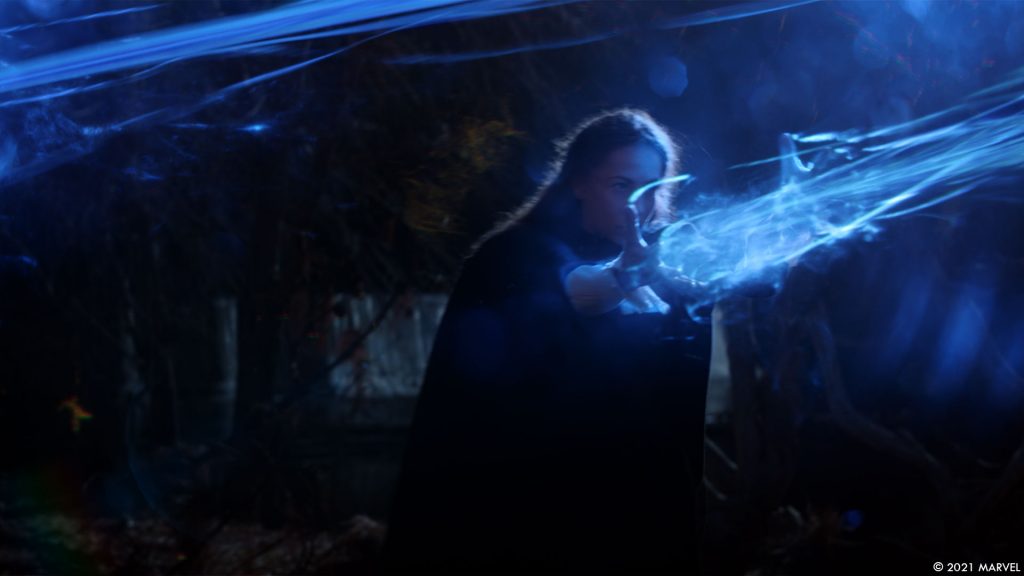
How was split the work amongst the Mr. X offices?
The Bangalore offices did the heavy lifting with the large number of rotoscopes, match moves, and composite tasks involved. The Montreal team did composite and supervision primarily.
What are the sequences made by Mr. X?
The witch coven sequences in episodes 109, 110.
How did you work with the art department for the Agatha’s magic beams?
Mr. X created some concept design initially provided by one of our concept designers, Gaetan Borneuf. These initial concepts where well received by the production side team and Matt. We used these concepts as our initial guide and developed the design multiple times as the briefs where adjusted. The Concept designs helped us navigate the emissive tendrils look dev while we worked away technically in FX to achieve those visual goal posts.
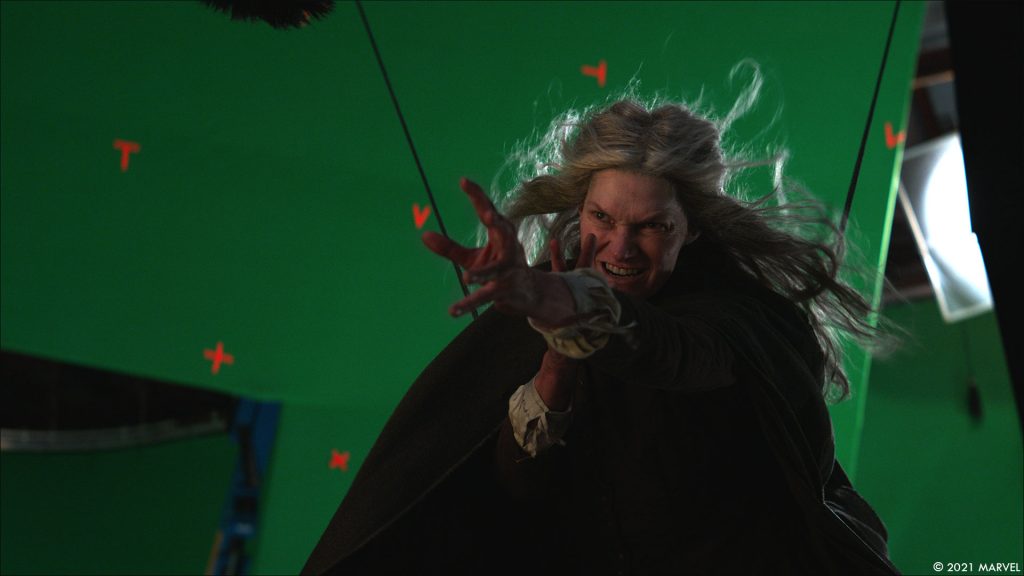
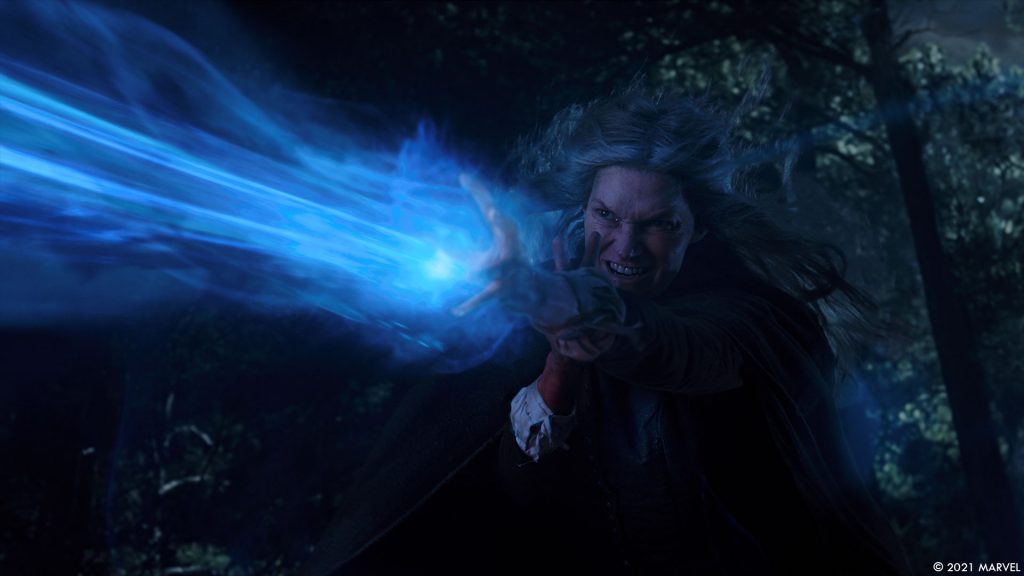
Can you explain in detail about the creation and animation of these magic beams?
The Beams were created in Houdini utilizing a wide array of particle advection techniques for the different tendril like twisting streams that occur throughout the EP. #109 sequence. The initial setup was poly line based and advection occurred along the tangent of the poly lines and forces were used to direct the emissions along the associated paths.
The origins had emissions that we utilized to establish the conical tear drop shape that showed directed force in the direction of Agatha. At the impacts we created a shunt and kill for any bouncing particles to keep the attack feeling lethal and directed into Agatha.
We were careful not to make this too invasive as we were playing to a family friendly viewership. The beams went through many design phases from a more languid colorful ethereal sinusoidal wave to a dark simplified color pallet with a significant directional advection. Impacts on Agatha where also explored, ranging from destructive emulation events to a less intense swirling contact point that we used to portray a penetration without too much direct vivisectional display. Mr. X used a tight match moved interactive lighting pass to reveal the under skin and under garment glow of beam penetration.
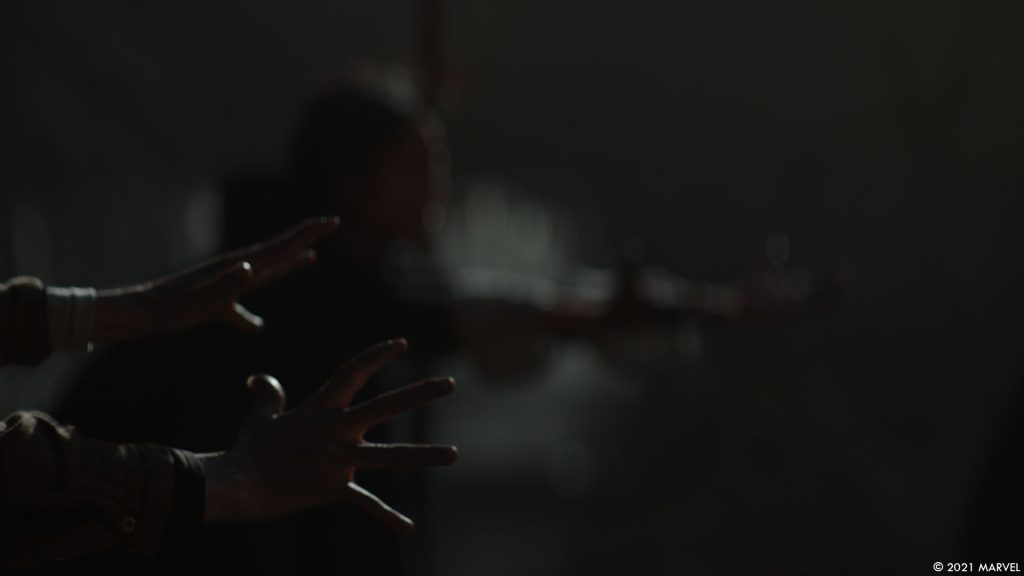
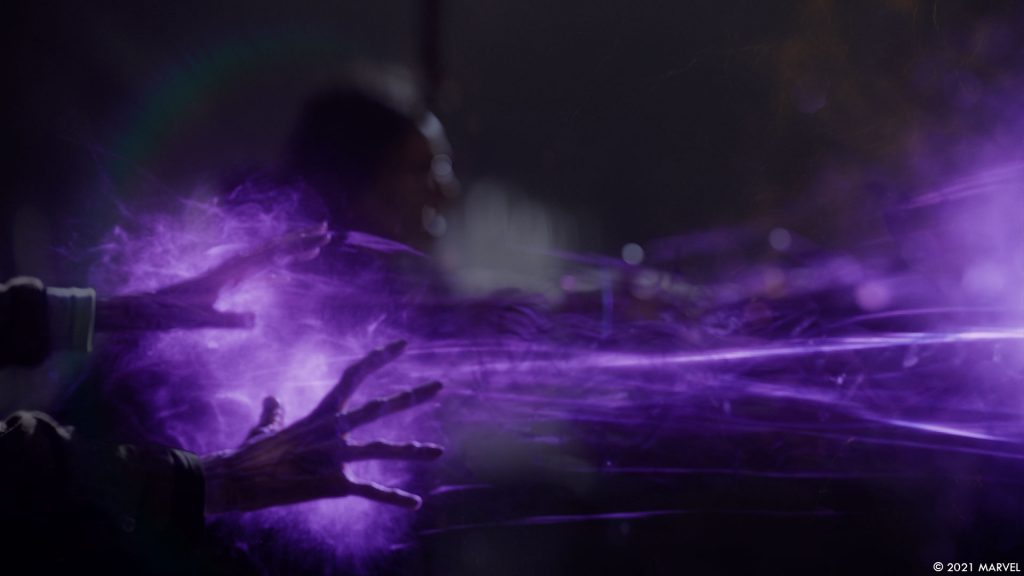
What was the main challenges with the magic beams?
Both sequences 109 and 110 were a creative and technical challenge for the studio and team. The sequences involved match moving up to nine animated doubles and creating large caches of particle FX in Houdini. The cache sizes and volumes were carefully controlled by the team to keep these large scenes from being un-manageable. The particle cache sizes ranged in the 120 million to 150 million so balancing scene detail and overhead was a priority. The sculpts on the models were ranging in the 100 million polycount. So, the scenes where rendered in separate layers for efficiency.
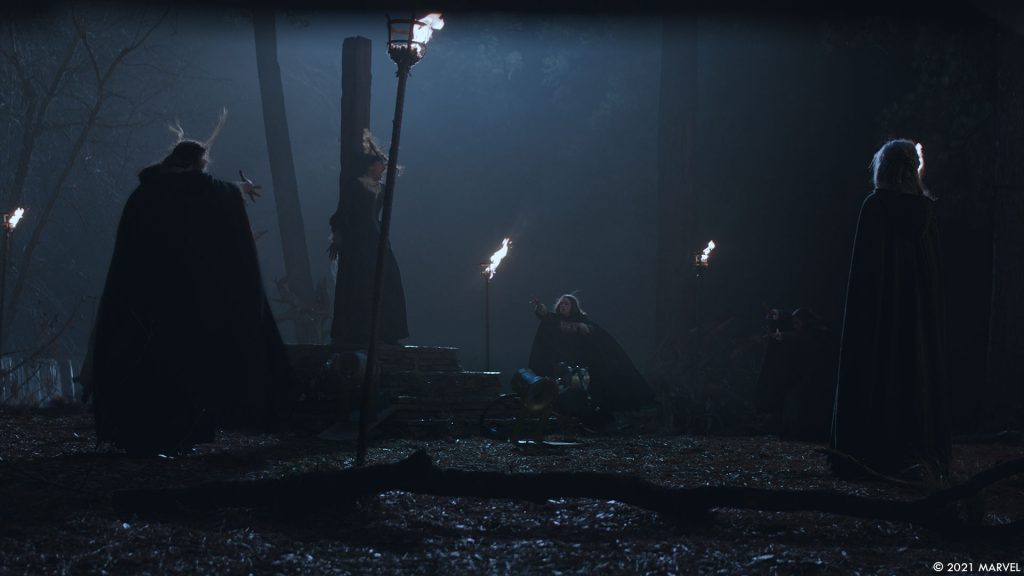
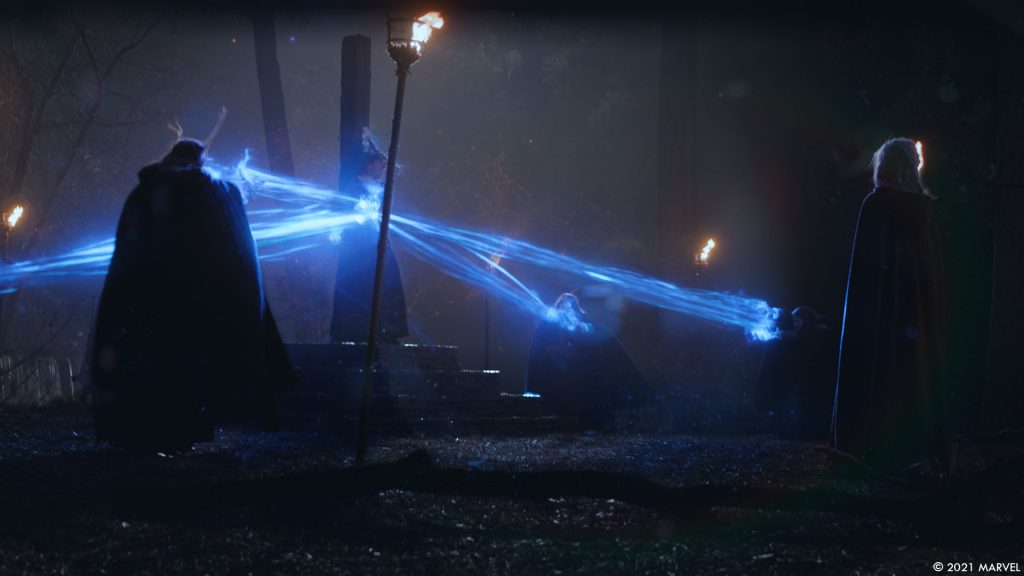
How did you create the effects when Agatha stole the life of the other witches?
Agatha’s signature tendril magic was developed with Matt and Tara’s guidance. The color values and twisting smoky tendril were carefully developed in the FX department by Michele Alessi and Erik Rasmussen. The direction was to make them creep and envelope around the other witch’s magic. This involved taking the beams that had already been created and then creating a fresh volume per beam and emitting the enveloping Agatha magic running against the force of the beams attacking her. Matt and Tara where careful to simplify color pallet so that this was very clear. Our Compositing Team in Bangalore, led by Bhavik Mehta worked to develop differences in opacity and texture and variance in speed to help tell that vary important Agatha moment. Her magic absorbing others power and making it succumb to her will is the key to her Origin Story, and the fulcrum for the WandaVision story arc.
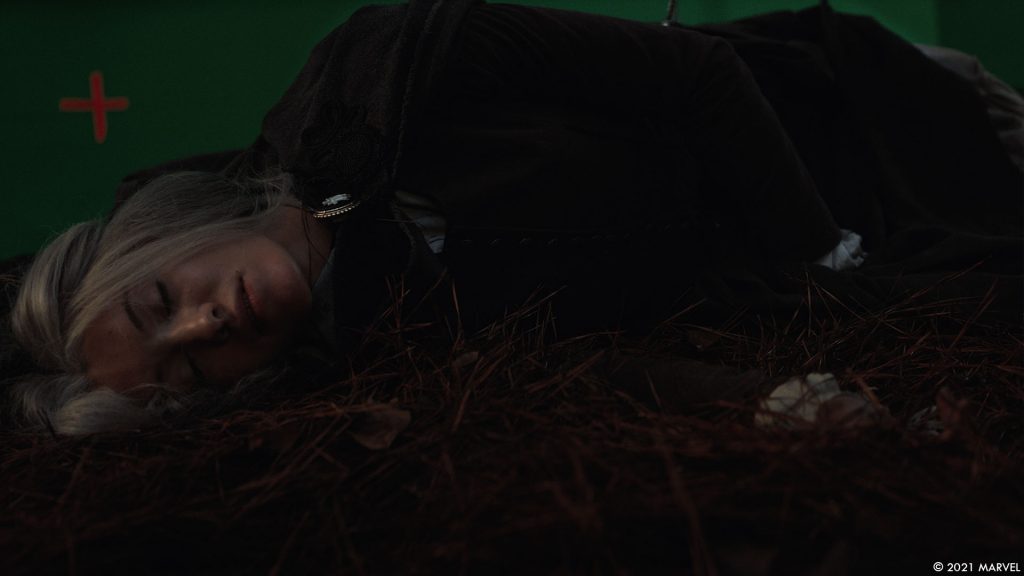
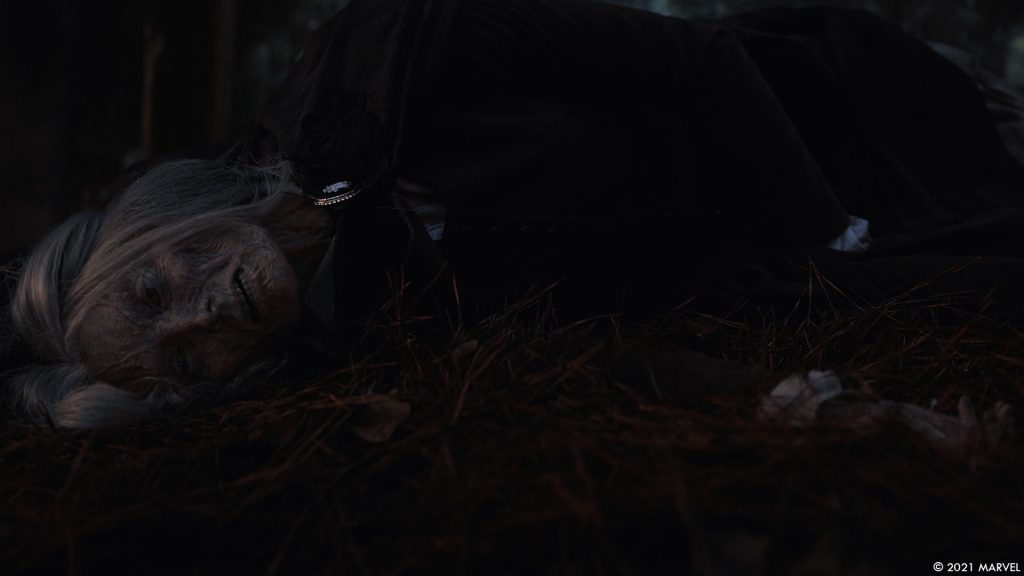
Can you tell us more about the digital double’s creation?
The primary challenge for our sequences was creating multiple Desiccation events for the witches as they begin to lose the battle with Agnes. All witches were scanned by production and provided to Mr. X for rigging, texture and animation. The 8 witches where match moved and 4 were identified for tight skin tracking in our tech animation department for interactive flesh glow and desiccation growth on their flesh. Multiple levels of sculpt where created for these and blend shapes were rigged to create the transitions from level to level of desiccating flesh.
What kind of references and indications did you received for these effects?
At the kickoff meeting in April, Tara showed Mr. X the Walter Donavon sequence from “Indiana Jones and the Last Crusade”. This Mummification or Desiccation was the basis for our Witch withering look. The mood and tone of the scene was defined as dark and scary but not too dark for our family friendly audience. Mr. X spent the next 8 months working on the R&D and scene development. From concept to final FX the Desiccation took us through the refinement of the withering limbs and faces.
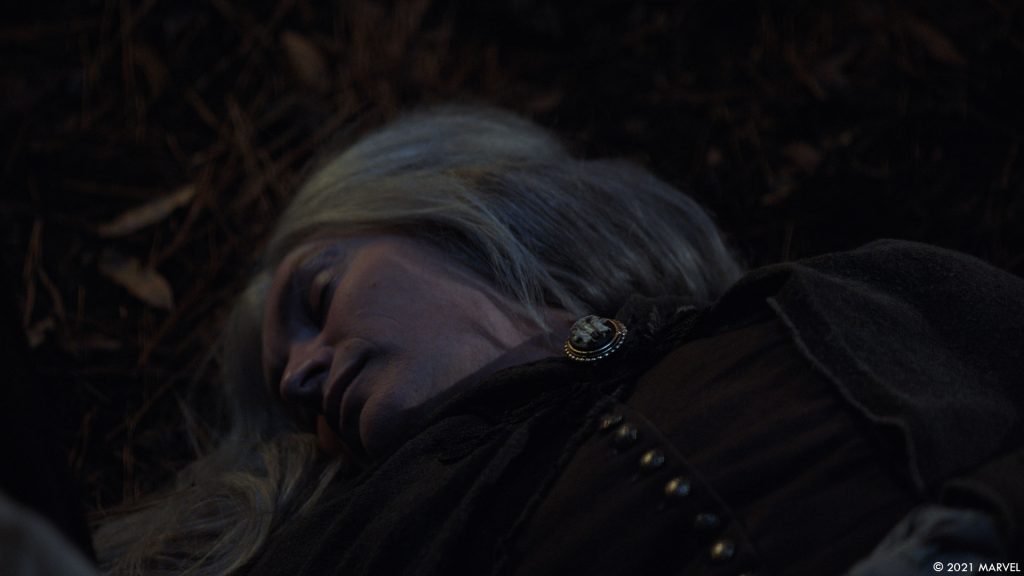
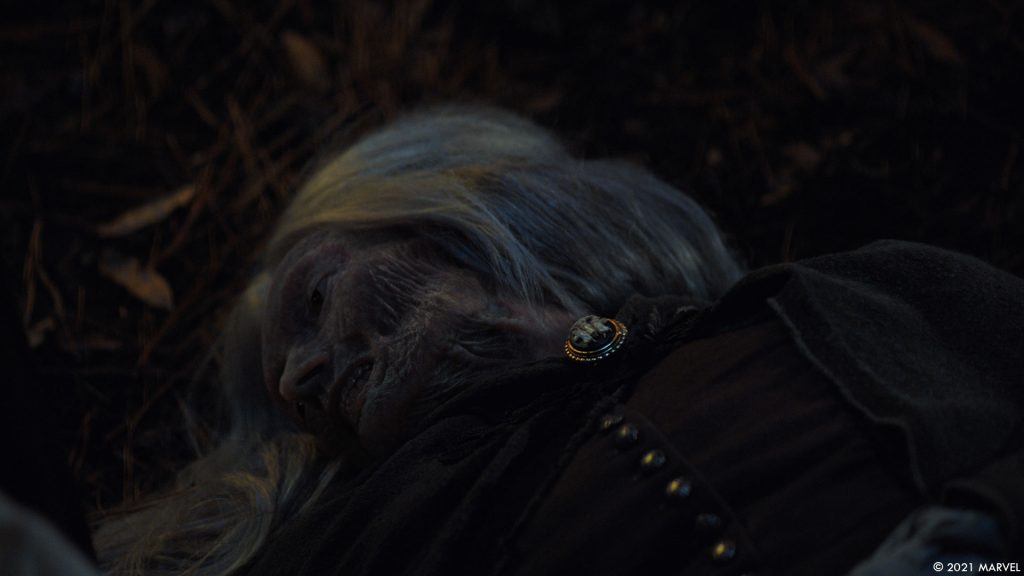
How did you create the Coven environment?
The Coven environment was Lidar, scanned by the production. The Mr. X environments team decimated the mesh and simplified the geo to create something that would support the level of detail we required. These scans are often 100’s of millions of polygons and often they need to be imported as individual slices and then assembled into simplified forms for reflection maps and environmental lighting purposes. The ground was separated and utilized as the anchor points for our witch positions and light rigging.
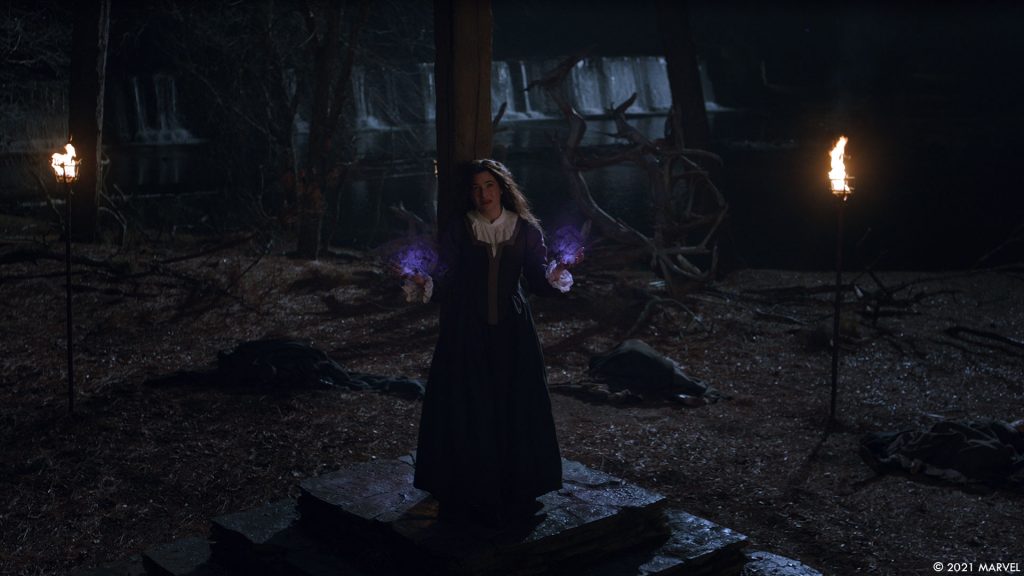
Which sequence or shot was the most challenging?
Together the coven of witches and their emissive magic powers created technically challenging scene scale and complexity. The size of the scenes and the individual layers of FX were the most demanding part of these sequences. The look development and attention to detail in the lighting and render where some of the more subtle but sophisticated elements of the sequences.
What is your favorite shot or sequence?
I personally enjoyed the EP #110 sequence. The desiccated witches attacking Wanda. The accomplishment is understated but a personally satisfying triumph.
What is your best memory on this show?
The team worked closely with show side Supervisors Tara DeMarco and Sandra Balej on both the development and design of the magic interactions. The studio was a joy to work with and very open to the creative process in development of ideas and elements that opened the magic realm of the coven environment.
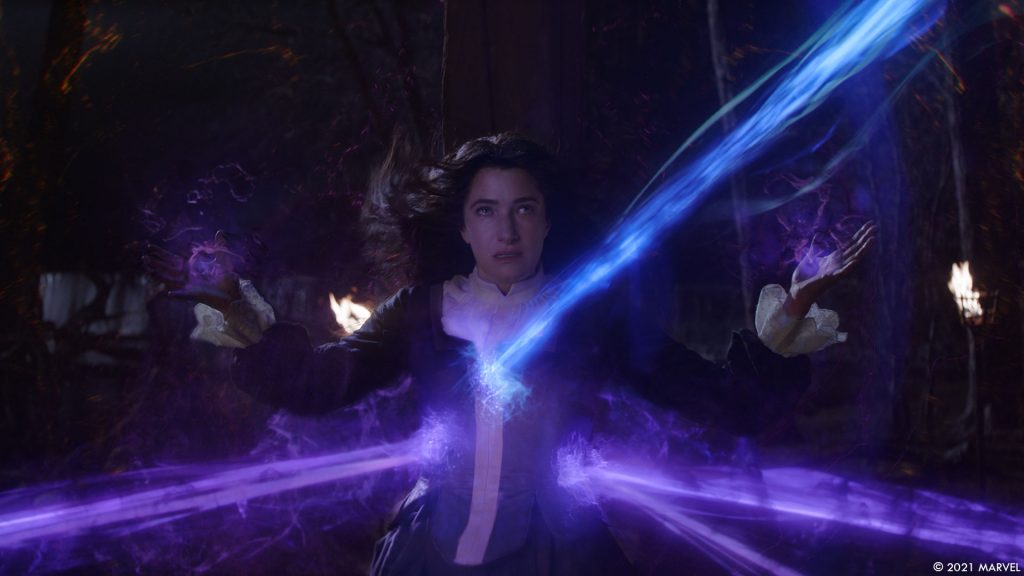
How long have you worked on this show?
We were on the two sequences approximately 10 months start to finish.
What’s the VFX shots count?
Final count was 152.
What was the size of your team?
The core team was approximately 28 people in Bangalore and 8 people in Montreal not counting the management staff of 10 or so people. The bursts of roto, prep and match move personnel would take us up into the low 120’s for weeks at a time.
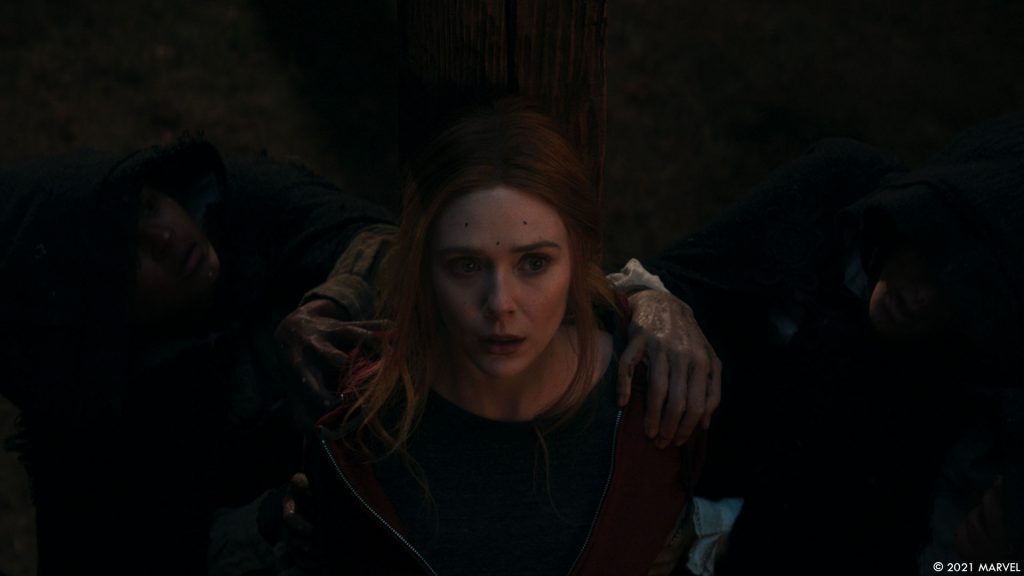
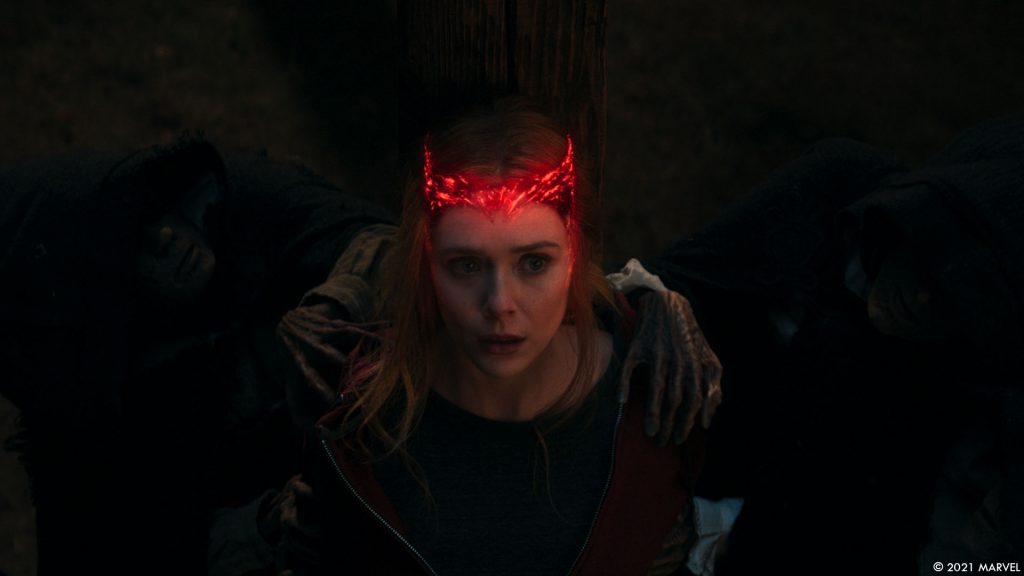
What is your next project?
I can’t say unfortunately!
What are the four movies that gave you the passion for cinema?
Blade Runner, Silent Running, and any Italian cinema Films I ran across in my younger years.
A big thanks for your time.
WANT TO KNOW MORE?
Tara DeMarco: Our interview of Overall VFX Supervisor Tara DeMaco about WandaVision.
Mr. X: Dedicated page about WandaVision on Mr. X website.
Disney+: You can watch WandaVision now on Disney+.
© Vincent Frei – The Art of VFX – 2021

